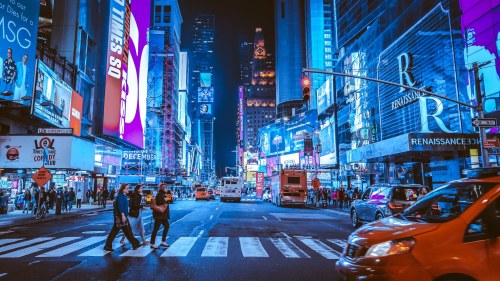New Thought on Global Cities

What is a global city? In the age of globalization, these cities and their corporations, universities, media, and culture run the global economy.
Global cities, like globalization, are something new under the sun. These cities—their corporations, universities, media, museums, and restaurants—run the global economy, set the global agenda, and shape the global culture and the global fads.
But what’s a global city? Every city, it seems, wants to be one. Can any number play? Or is this description, Global City, reserved for a select and powerful few who really do stand at the command points of the global economy? If so, who are they? And how do they differ from other, lesser cities that live in their shadow?
Everybody, it seems, wants to talk about globalization and about cities. But there are surprisingly few attempts to put the two together, to think about global cities. Some scholars, particularly the invaluable Saskia Sassen, have done seminal work on these cities, including their strengths and vulnerabilities. But given the importance of these cities in today’s world, there’s been too little real thought given to what they are and how they relate to each other.
That’s changing and The Chicago Council on Global Affairs proposes to lead that change. It will announce this week a major international conference on global cities, to be held in Chicago later in the spring. In addition, it is recruiting academic fellows, both resident and non-resident, to study global cities. The idea is to make Chicago the international go-to place for thought and research on this new brand of cities.
Why Global Cities? And Why Chicago?
Good questions. Here are some answers.
Until recently, both cities and economies were national. That is, they were firmly rooted within national borders, governed by national laws and regulations, and answerable to national governments.
That’s changed. Not so long ago, in the late ‘80s or early ‘90s, the economy burst its national boundaries and went global. The end of Communism and the emergence of 3 billion new workers, most of them willing to work for a fraction of Western wages, created offshoring, global corporations, and global markets. So did technology, mostly the Internet and broadband that put everywhere in the world in instant contact with everywhere else. National governments don’t even pretend to control this new economy.
As we know, this transformed once-backward nations such as China and India into global powerhouses. It also transformed Western cities that saw their economies go away. Many of these cities are still struggling to understand what hit them and what to do about it.
But this global economy, as scattered as it is, still has to be run from somewhere, and that somewhere is the global cities. Some, such as New York and London, were big national financial centers: now they’re global financial centers. Los Angeles stands at the peak of the global entertainment business. Hong Kong and Singapore loom over global trading. Beijing and Shanghai are China’s windows to this global economy: Toronto and Sydney play the same role in Canada and Australia.
There were a handful of old industrial cities, initially hard hit by the hollowing-out of their old manufacturing economies, who have taken their expertise in the industry and turned themselves into global centers of industrial knowledge, to achieve a dominance they never had before. Sao Paulo and Seoul are in this category. And so is Chicago.
Chicago, in fact, is practically a laboratory for the study of global cities—their transformation from one economy to another, their potential, and their problems. These cities are getting rich. But they also are wrestling with global challenges – immigration, climate change, terrorism, aging infrastructure, especially the resentment and violence among too many of their citizens who have been left behind in this epochal economic transformation.
In a sense, every city today is a global city, in that the global economy affects every town and city, no matter how big or small. But real global cities are special.
They’re bigger, although size alone is not enough: Lagos and Kolkata are huge, but that’s all. They have the biggest airports, with the most international flights. They are headquarters to more global corporations, served by more global lawyers and consultants. They have the most important universities and the best orchestras. Often, they are capitals, such as Washington or Tokyo or Paris, but not necessarily: Shanghai, Sao Paulo, Toronto, Frankfurt, Sydney and, yes, Chicago, are in a special category of non-capital global cities.
A new and useful theory on global cities says that, if our economy used to be tied to certain places, it now is part of a flow.
The old industrial economy was defined by places, such as a factory on Chicago’s South Side. The company’s employees worked downstairs and its manager worked upstairs. Most of the workers lived in the same neighborhood. They took raw materials shipped in from the Midwest and shipped them back out, usually to the Midwest.
Today, that economy is strewn across the globe, in a myriad of places. Everything in that economy—ideas, services, goods, people, information—flows constantly along a global supply chain, pausing to pick up some value-added, and then moving on.
In this sense, global cities don’t compete so much as they collaborate. They’re like airports, bringing in and sending out people and planes, existing in a network of other airports. But some airports are bigger and more important. We call them hubs. And some cities are bigger and more important, the hubs of this global flow. We call them global cities.
Counting and rating these cities has become an academic parlor game. You’ve seen these rankings, usually with London and New York at the top, Chicago somewhere in the top ten near Shanghai and Los Angeles, and the others scattered below, depending on who’s doing the ranking and what they consider important.
It’s an exclusive club, maybe 50 or 60 cities altogether. In some ways, they’re sort of a new Hanseatic League – still located within nations and answerable to national governments, but increasingly dealing directly with each other. In some ways, Chicago has more in common with Shanghai or Frankfurt than it does with cities in its own backyard, such as Indianapolis or St. Louis.
Does this mean that global cities will have their own foreign policies, talking directly to other global cities instead of going through Washington or other capitals? Given the centrality of these cities to global affairs, and given the incompetence of capitals in handling climate change and other global problems, the answer seems to be yes.
A foreign policy for cities? It’s a new thought and needs exploration. So do so many aspects of these newfangled metros called global cities. That exploration is what the Chicago Council has in mind.

